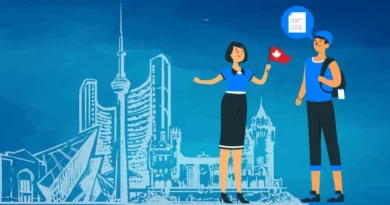A Comprehensive Overview of Southern Africa’s Border Crossings
Southern Africa boasts a rich tapestry of cultures, landscapes, and histories, encompassing diverse nations each with its own unique charm. This region is a mosaic of countries interconnected by a network of border crossings, facilitating trade, travel, and cultural exchange. In this exploration, we delve into a comprehensive list of Southern Africa’s border crossings, unraveling the intricacies and significance of each junction which is important for Africa overland tour enthusiasts to understand.
1. South Africa
South Africa, a vibrant economic hub, shares borders with six countries:
1.Botswana: Border crossings include Gemsbok, Skilpadshek, and Ramatlabama.
2. Lesotho: The borders between Lesotho and South Africa are numerous due to Lesotho’s enclave status. Key crossings include Maseru Bridge and Caledonspoort.
3.Namibia: Main crossings include Vioolsdrif and Noordoewer.
4. **Eswatini (formerly Swaziland)**: Major crossings are Oshoek and Golela.
5. **Zimbabwe**: Key crossings include Beitbridge and Lebombo.
6. **Mozambique**: Main crossings are Komatipoort and Ressano Garcia.
2. Botswana
Botswana shares borders with four countries:
1. South Africa: As mentioned earlier, key crossings include Gemsbok and Ramatlabama.
2. Namibia: The Trans-Kalahari Highway facilitates travel between Botswana and Namibia.
3. Zimbabwe: Major crossings include Plumtree and Ramokgwebana.
4. Zambia: Key crossings are Kazungula and Pandamatenga.
3. Namibia
Namibia shares borders with four countries:
1. Angola: Key crossings include Oshikango and Katwitwi.
2. Botswana: Refer to Botswana’s border crossings.
3. South Africa: Refer to South Africa’s border crossings.
4. Zambia: The Katima Mulilo Bridge links Namibia with Zambia.
4. Zimbabwe
Zimbabwe’s border crossings are vital links to neighboring countries:
1.Botswana: Refer to Botswana’s border crossings.
2. Mozambique: Refer to Mozambique’s border crossings.
3. South Africa: Refer to South Africa’s border crossings.
4. Zambia: Key crossings include Victoria Falls and Kariba.
5. Mozambique
Mozambique shares borders with six countries:
1.Malawi: Major crossings include Zobue and Mandimba.
2.South Africa: Refer to South Africa’s border crossings.
3.Swaziland (Eswatini): Refer to Eswatini’s border crossings.
4. Tanzania: Key crossings include Negomano and Mtwara.
5. Zambia: Refer to Zambia’s border crossings.
6. Zimbabwe: Refer to Zimbabwe’s border crossings.
6. Zambia
Zambia shares borders with eight countries:
1.Angola: Key crossings include Katima Mulilo and Chirundu.
2. Botswana: Refer to Botswana’s border crossings.
3.Democratic Republic of the Congo: Major crossings include Kasumbalesa and Nakonde.
4.Malawi: Refer to Malawi’s border crossings.
5.Mozambique: Refer to Mozambique’s border crossings.
6.Namibia: Refer to Namibia’s border crossings.
7.Tanzania: Key crossings include Tunduma and Nakonde.
8. Zimbabwe: Refer to Zimbabwe’s border crossings.
7. Eswatini (Swaziland)
Eswatini shares borders with two countries:
1. Mozambique: Refer to Mozambique’s border crossings.
2.South Africa: Refer to South Africa’s border crossings.
8. Lesotho
Lesotho is an enclave within South Africa, and its borders are numerous:
1.South Africa: Refer to South Africa’s border crossings.
Significance and Challenges
These border crossings play pivotal roles in the socio-economic dynamics of Southern Africa. They facilitate trade, tourism, and cultural exchange, fostering regional integration and cooperation. However, challenges such as bureaucratic red tape, infrastructure deficiencies, and occasional political tensions can hinder seamless cross-border movements within the top tourist destination in the southern Africa.
Conclusion
Southern Africa’s border crossings epitomize the interconnectedness and diversity of the region. They symbolize more than just geographical boundaries; they are gateways to new experiences, opportunities, and interactions. As nations strive for greater regional cooperation and integration, these border crossings will continue to evolve, adapting to the changing landscapes of politics, economics, and society. In traversing these borders, one embarks on a journey of exploration, discovery, and connection across the vibrant tapestry of Southern Africa.




